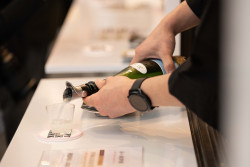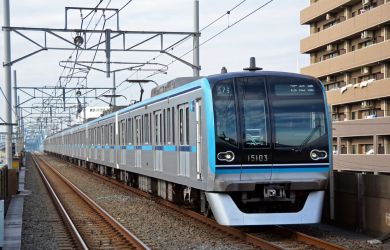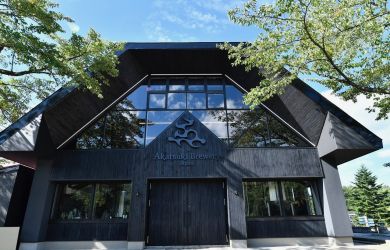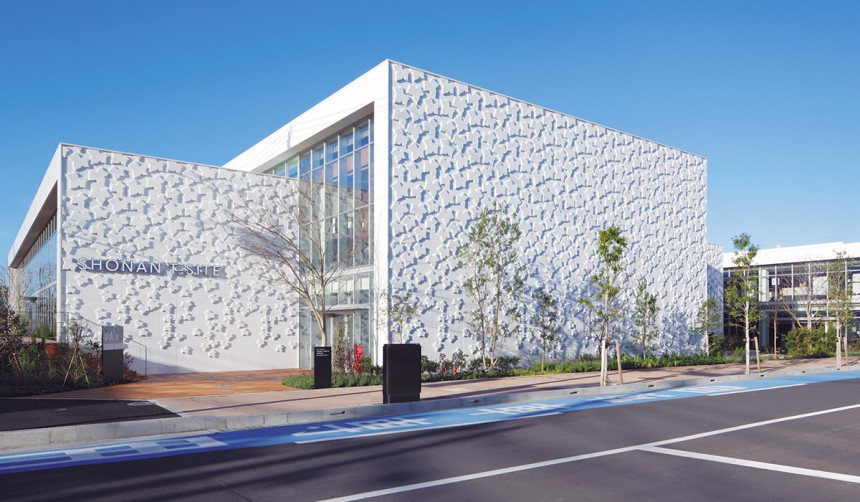
When Astrid Klein and Mark Dytham alighted at Narita, little could the budding architects have imagined that, in two decades, they would have left their imprint on Tokyo in the form of some of the city’s most recognizable buildings.
“Visas weren’t easy,” recalls Dytham about their early years of struggle after launching their own firm in 1991. British-born Dytham and Italian-born Klein had arrived in Tokyo in 1988 with scholarships and hopes of interning for one of Japan’s leading architects.
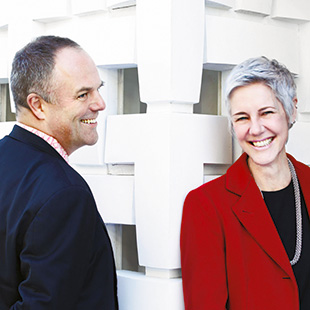
(Photo courtesy of Nacása & Partners Inc. – Klein Dytham architecture)
“We pushed for it, and the authorities were extremely lenient—and if we were a different color, it wouldn’t have happened, I think,” he believes. “There were heartstopping moments when we were flying back into Japan with an office, wondering if they’d let us back.”
The pair were drawn by Japan’s freewheeling architectural spirit and booming bubble economy, and worked in the office of renowned architect Toyo Ito before creating Klein Dytham architecture.
“We feel less pressure as architects here in Japan, because you know a building is only going to be here for 30 years, whereas in London you’re building for 400 years,” Dytham observes. “In London, there’s a whole public debate by people who really don’t know anything about architecture, and that was one of the reasons we came here. We felt restricted coming out of college in London.”
Fast-forward two decades, and the modern-yet-playful Klein Dytham look can be seen across Tokyo in buildings like the Harajuku Q Plaza and Daikanyama T-SITE, the latter of which we sit in, enjoying a lunch in the cozy complex of cafés and shops anchored by a Tsutaya bookstore. And architecture is just the beginning of KDa’s activities.
There is also PechaKucha, a TED-like presentation night whose signature “20 images x 20 seconds” format now takes place in 800 cities worldwide, as well as cutting-edge Roppongi performance space SuperDeluxe, where PechaKucha was born a decade ago.

(Photo courtesy of Nacása & Partners Inc. – Klein Dytham architecture)
Unlike many starry-eyed artists and architects who come to Japan seeking Zen and bamboo, Dytham says it’s Tokyo’s protean energy that provides their inspiration. “Our aesthetics don’t come from traditional architecture, but from a humanistic point of view,” he offers. “We’re Tokyo architects. Sure, we see the temples—but we get inspired by Harajuku, Shibuya … contemporary currents in the city. We try to draw people in and lift their spirits.”
Being foreign works both for and against Klein and Dytham. “We see Japan in a very different way than Japanese,” Dytham says. “We see things they can’t see. For example, a standard taxi in Japan … you’ve got lace and gloves, automatic doors—but a Japanese person sees nothing. Although we’re all building in Japan, the same influences come out different.”
“Some say our work is easily read,” Dytham laughs. “When we show a model, we can’t explain it with fancy Japanese architectural speak, it has to speak for itself. Here at Tsutaya too, it has to speak for itself. There’s a massive T. We drew the T in the first three to four minutes of the briefing. Everyone understands a T. It’s storytelling through architecture in simple form. It’s fun and easily read, even by kids. [The] Japanese seem a very serious race, but they actually have a very good sense of humor.”
The love for constant renewal gives Dytham mixed feelings about the last vestiges of postwar Tokyo now being modernized—some say robbed of its essential spirit—with wide boulevards and quake-strengthened structures.
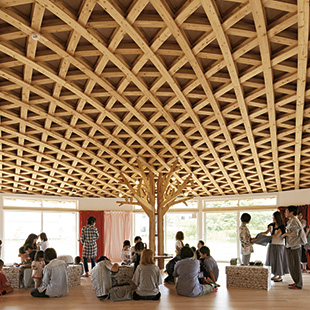
(Photo courtesy of Koichi Torimura – Klein Dytham architecture)
“People say it’s slash and burn,” he says, “but they’re making the city safer and more efficient. In an earthquake-prone country like Japan, this renewal of the buildings is useful, and could be seen to save the city in the future. It’s tough about places like Shimokitazawa and the Okura, but Japan’s always been like that. You make things of wood, they burn down, and they just rebuild, like Ise Shrine. And in Tokyo, there is no historical context anyway.”
With a building in the works at Ginza’s main crossing and several T-SITES in various states of planning and completion, times are good for Klein Dytham following a brutal patch after the financial crisis and disaster.
“What’s happened is the Olympics,” Dytham says. “It was an amazing thing to do because the country collapsed in on itself after the disaster, and the Olympics has spurred a huge amount of works for us. We’ve even now got an Olympic mondai—construction costs are thirty to fifty percent more because everything is in short supply.”
Which leads to the inevitable question as to Dytham’s thoughts on the Olympic stadium fiasco.
“It was a bad brief,” he answers diplomatically. “The architect [Zaha Hadid] built to the brief, which was over-spec’d to the site. It got out of control—they could have learned lessons from London where they made so it can be downsized after the Olympics. But they were obviously looking for a showcase project. It was convenient they chose an overseas architect so there wouldn’t be any backbiting over the job, which was a shame because there are many brilliant Japanese architects. It was a political decision.”
Klein Dytham’s 5 Must-See Tokyo buildings
- Yoyogi National Stadium—Kenzo Tange
A very brutal building, but in a timeless, beautiful way. Designed with a slide rule. - Tower House—Takamitsu Azuma
A tiny 4-storey house Azuma built as a student to see if he could live on 15 square meters. A seminal work that no one knows. - Shibaura House—Kazuyo Sejima
Vertical, glass curtain walls are leavened by a focal spiral staircase. - The Gallery of Horyuji Treasures—Yoshio Taniguchi
Sublime space couples elegant, cubic forms with a cheery pond. - Nezu Museum—Kengo Kuma
Everybody rushes off to Kyoto, but Kengo Kuma’s building and the garden are amazing.
